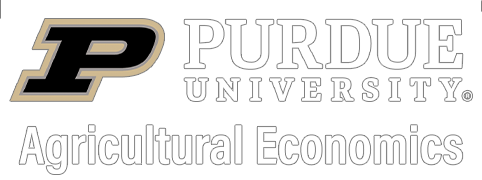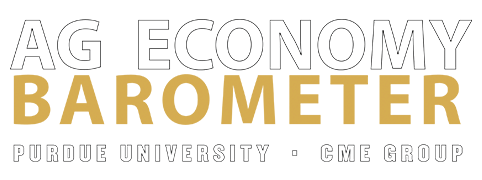July 13, 2015
Higher Feed Costs Could Mean Pork Industry Losses
Weather damaged corn and soybean fields are also harmful to hog producers. Rising feed prices mean higher costs of production for the pork industry. Recent higher corn and soybean meal prices have increased anticipated hog costs by about $10 per head. These higher feed costs shift the outlook from one of modest profits to losses of about $6 per head over the coming 12 months.
With the potential for higher feed costs, it is fortunate that the industry has not moved toward aggressive expansion following a record high profit year in 2014. While profits were exceptional last year, there was also grave uncertainty over the ability of the industry to control the PED virus. Those two forces seemingly have offset each other and producers indicated to USDA that they only expanded the breeding herd by one percent as of early June. Surprisingly, producers say they intend to drop their farrowings by three percent this summer and by four percent this fall. The intended decline in farrowings may not develop since the breeding herd remains somewhat higher than year-ago levels.
In the summer and fall of 2014, the PED virus sharply lowered the number of hogs available for processing. As a result, this summer and fall’s supplies will be up sharply when compared to the same period last year. Third quarter pork production is expected to rise by nine percent and fourth quarter production is expected to be up four percent. Pork production during the first-half of 2016 will come primarily from the reduced farrowings this summer and fall. As a result, pork production is expected to be down by one percent in the first quarter of 2016 and by three percent in the second quarter. Both these numbers assume producers will follow through on their intentions to reduce farrowings. If that does not happen, then pork supplies will be larger in the first-half of 2016.
Rising feed costs is a new concern for producers. December 2015 corn futures, as an example, rose from about $3.80 on June 24 to about $4.30 on July 6. This increases the cost of hog production by around $2.25 per live hundredweight. In a similar time period, meal futures have risen about $40 PER ton, which increases cost by about $1.25 per live hundredweight. So, recent increases in corn and soybean meal prices have increased costs by about $3.50 per live hundredweight, or by nearly $10 per hog. Weather is a primary driver of feed prices right now so no one knows if feed costs will get much higher or moderate from here.
Cost of production had dropped to $50 per hundredweight in mid-June. With current higher feed prices, costs are expected to be closer to $53.50 for the last-half of 2015 and the first-half of 2016. Remember that feed prices can still change considerably depending on weather for the rest of the growing season.
Hog prices averaged about $48 in the first quarter of this year, with an estimated loss of $11 per head. Second quarter prices were near $56, for an estimated profit of $14 per head. Third quarter prices are expected to average about $53 per hundredweight, which is near breakeven. The final quarter this year is expected to see prices drop to near $47 with losses estimated at $18 per head. For all of 2015, losses are expected to average about $4 per head. Recent feed price increases are the primary reason the 2015 outlook has shifted toward expected losses.
What is the outlook for 2016? Hog prices are expected to be around $47 per live hundredweight in the first quarter of 2016 and rise seasonally to $54 in the second quarter. Given current corn and meal prices, this would mean an estimated loss of about $17 per head in the first quarter and a profit of $10 per head in the second quarter.
What does all this mean? First, pork producers and their allied industries are to be commended for dealing with the PED virus in late-2013 and 2014. It appears from the USDA producer survey data that the industry may still be experiencing decreased pigs per litter of around one to two percent due to the disease. This is just a rough estimate from data collected in USDA’s Hogs and Pigs reports. That data seem to show that the number of pigs per litter has not fully returned to the rate of increase during 2008 to 2013, before PED. Secondly, the industry is also to be saluted for a modest breeding herd expansion after record high profits in 2014.
It is clear that the impacts on feed prices from the current weather markets can have a large impact on pork production returns. Weather markets are always difficult to predict, but heightened feed prices should remind the industry to be cautious about expansion, and to follow through on intentions to reduce farrowing this summer and fall.
TAGS:
TEAM LINKS:
RELATED RESOURCES
UPCOMING EVENTS
We are taking a short break, but please plan to join us at one of our future programs that is a little farther in the future.



